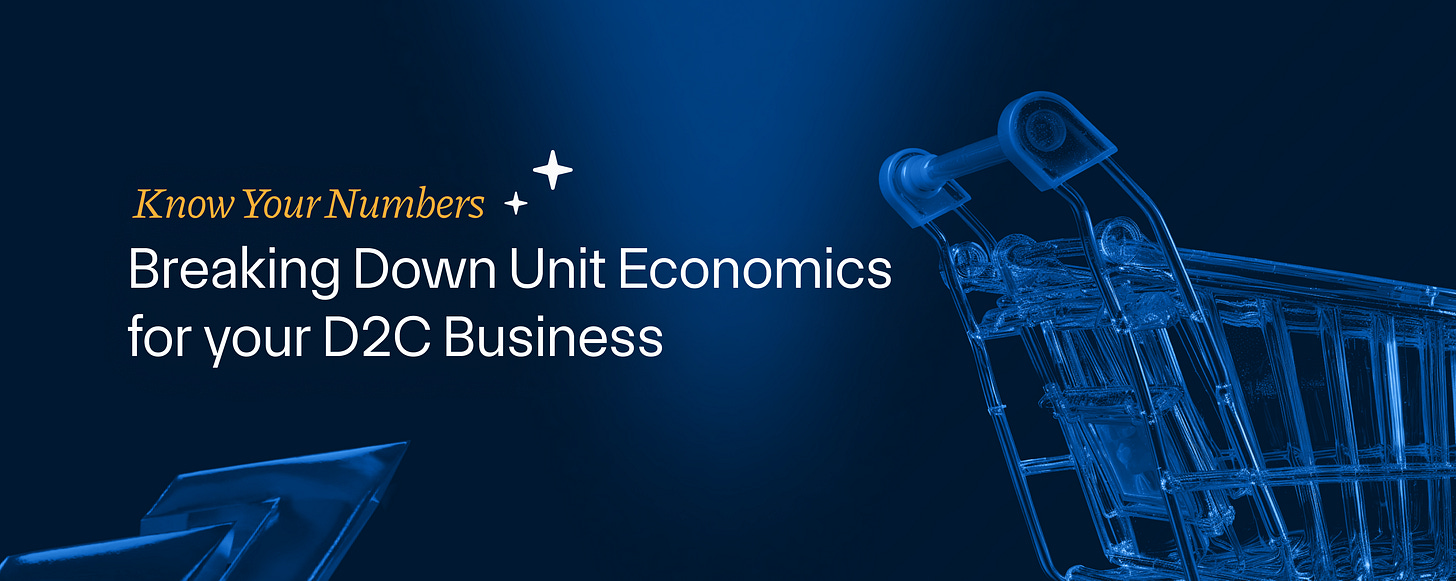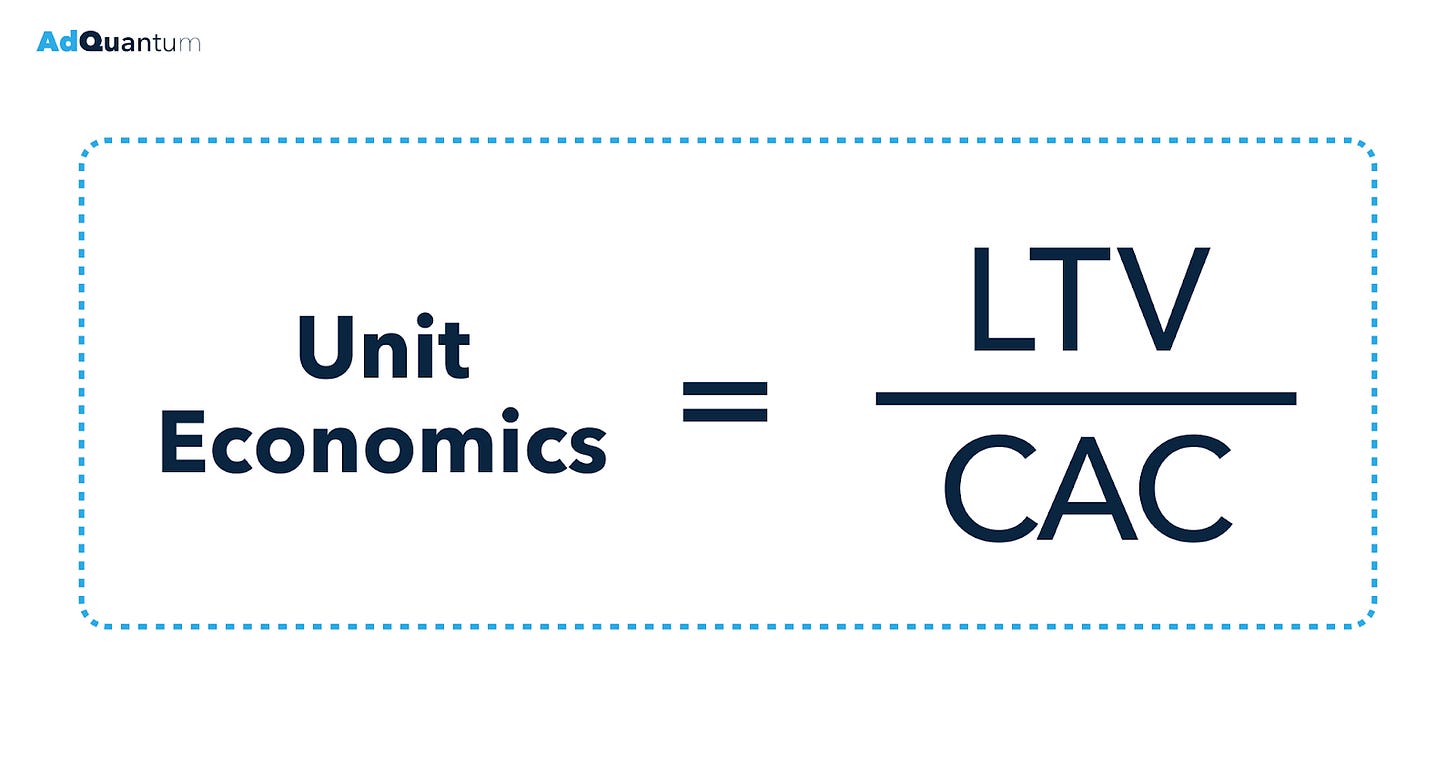Breaking Down Unit Economics for Your D2C Business
Unit economics, the foundation of every successful business, answers some of the toughest questions- Are you acquiring customers profitably? Can you scale without breaking the bank? Find out below.
As of 2024, 90% of startups fail, which can feel daunting, but it's a reality many entrepreneurs face on their journey. Shockingly, 1 in 5 startups fail within their first year of operation, and 10% don’t even make it past their first year after launching.
One of the core reasons behind this mind-boggling failure rate? Unsustainable unit economics. Many startups pour resources into acquiring customers without understanding whether each customer contributes enough revenue to cover costs and drive profitability.
This also applies to the infamous D2C model, which has taken the world by storm. From skincare to snacks, clothing to coffee, D2C brands are carving out a big slice of the retail pie.
But here’s the thing—while D2C sounds like a dream business model, it’s not as easy as running a flashy ad on Instagram and watching the sales roll in. Behind every thriving D2C brand is a rock-solid understanding of the numbers, particularly unit economics and pricing.
Let’s say- You’re selling beautifully designed reusable water bottles online. They’re flying off the shelves, but at the end of the month, you realise you’re barely breaking even. Why? Maybe you’re spending too much on ads, your shipping costs are eating into profits, or your pricing isn’t high enough to cover all your costs. Without a clear understanding of your unit economics, it’s like trying to fill a leaky bucket.
"The most important thing you need to learn in the first 12-18 months of a startup is unit economics. If you get that right, everything else falls into place."
Today, in this article, we’ll break down the basics of unit economics and show you how to price your product effectively.
What Are Unit Economics and Why Do They Matter?
Unit economics is just a fancy way of asking:
How much does it cost you to sell one product?
How much money do you make from that one product?
For D2C brands, this is especially important because every customer comes with a cost (ads, discounts, shipping) and every rupee counts.
The key pieces of unit economics are:
Customer Acquisition Cost (CAC): This is the money you spend to acquire a customer (e.g., ads, influencer campaigns, email marketing).
Lifetime Value (LTV): This is how much money you make from a customer over time.
Contribution Margin: This is what’s left after you subtract your costs (like making, shipping, and marketing the product) from your selling price.
If these numbers don’t add up to a profit—or at least a path to profitability—you’ve got a problem!
Breaking Down the Math
Let’s look at a simple example:
Scenario: You run a D2C business selling organic skincare products.
Selling Price: ₹1,500
Production Cost: ₹800
Shipping Cost: ₹200
Marketing Spend (per customer): ₹300
Calculation:
Revenue per Unit: ₹1,500
Total Variable Costs: ₹800 (production) + ₹200 (shipping) + ₹300 (marketing) = ₹1,300
Contribution Margin: ₹1,500 - ₹1,300 = ₹200
Source: AdQuantum
In this example, you’re making ₹200 per unit, which contributes to covering fixed costs and generating profit. If your CAC is higher than your contribution margin, you’re losing money on each sale.
Here’s the golden rule: Your LTV should be at least 3x your CAC.
Why? Because if you’re spending ₹500 to acquire a customer but only making ₹700 from them over time, your profits will vanish into thin air. A good way to boost LTV is to build a loyal customer base. Offer subscriptions, launch complementary products, or create referral programs to keep them coming back.
"If your unit economics don't work, then you're just wasting time. The math will tell you if your business will succeed or not. You can't ignore it."
Steps to Get Your Pricing Right
Unit economics and pricing go hand in hand, especially when you're running a business. The right pricing strategy should align with these factors, ensuring that the revenue you earn from each customer not only covers your costs but also allows for growth.
Pricing is one of the trickiest decisions you’ll make as a D2C founder. When you set your price, you're essentially deciding how much each customer is worth to your business. If the price is too low, you might struggle to cover all the costs involved in acquiring that customer (like marketing, sales, or production costs), and you may end up with slim or negative margins.
On the other hand, if the price is too high, you risk scaring potential customers away, limiting the volume of sales, or making it harder to compete in the market.
Here’s how to think about pricing:
Cost-Based Pricing: Start by adding a healthy margin to your costs. If it costs you ₹500 to make and sell the product, maybe you price it at ₹1,000 for a 50% margin.
Value-Based Pricing: How much are customers willing to pay for the value you’re offering? If your product saves time, solves a problem, or feels premium, people might pay more.
Competitor-Based Pricing: Check what your competitors are charging. You don’t always have to match them, but it helps to know where you stand.
For example, if you’re selling a luxury skincare product, pricing it too low could make it look cheap. On the other hand, pricing it too high without offering a clear value (like better ingredients or benefits) could turn off buyers.
Few tips to keep in mind while building a solid pricing strategy:
Know Your Costs: Write down every single expense that goes into selling your product—materials, packaging, shipping, and marketing.
Understand Your Customers: Who are they? How much are they willing to spend? What makes them excited about your product?
Test Different Prices: Experiment with pricing to see what works. Maybe your customers are willing to pay ₹1,500 instead of ₹1,000! Tools like Shopify or even Instagram polls can help you test.
Track and Adjust: Pricing isn’t set in stone. Keep an eye on your margins, customer feedback, and competitors, and tweak your pricing when needed.
Pricing can make or break your business—find out how to get it right here.
Common Mistakes D2C Brands Make
Let’s save you some heartache by calling out a few common missteps:
Underestimating CAC: Ads are getting more expensive. If you’re spending too much on acquisition, you’ll struggle to make money.
Pricing Too Low: Many new founders think low prices will help them compete. But that can hurt your margins and make your brand look “cheap.”
Ignoring Profitability: Chasing sales without caring about profit is a fast track to burnout.
Wrapping It Up
The economics of D2C isn’t rocket science, but it requires focus. Understand your unit economics, price your products smartly, and keep tweaking as you learn.
The magic formula?
Keep CAC low.
Maximise LTV.
Price for value, not just cost.
Unit economics is the foundation of every sustainable business. It involves knowing how much you can spend on ads without burning cash, how to price your product so it’s fair yet profitable, and how to spot opportunities to grow without sacrificing margins.
"Unit economics and pricing are the two sides of the same coin. You can’t scale sustainably without understanding how they work together."
And the best part? Once you get these numbers right, you’ll have the confidence to scale without second-guessing your decisions. Now, go on, crunch those numbers, adjust that pricing, and build the business you’ve always envisioned. You’ve got this!






